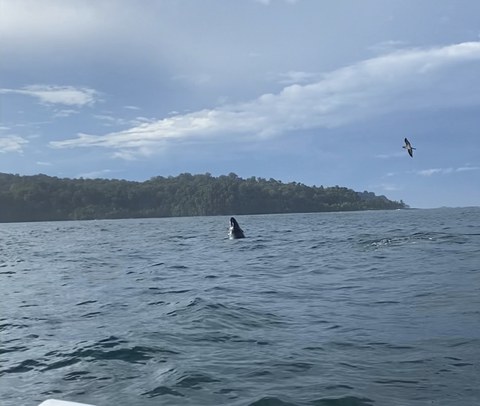Jan 31, 2023
Animals and Money: Whale Watching and Whaling - Ambivalent Tourism in Iceland

Whale Watching Contributes Millions of € to the Economy of Húsavík (Iceland).
Cetacea (which is the biological name of the group including whales, dolphins and porpoises) and whales in particular, are nowadays perceived as symbols of nature. Observing them in their natural habitat can be a humbling experience, making people feel connected to nature. In 2019, more than 15% of the 2 million tourists visiting Iceland, attended whale watching tours1,2. Húsavík, a small town in Skjálfandi Bay, with around 2300 inhabitants, is even referred to as the whale watching capital in Europe3. The main attractions is/are whale watching and the local whale museum. Furthermore, Húsavík hosts a research center of the University of Iceland, focusing on marine biology and cetaceans in particular, altogether making them an important foundation for the local economy4. Around 104,000 tourists came to Húsavík in 2019 for whale watching, which currently costs between 75 and 141€ per person5,6,7. An estimate of the financial turnover can be calculated by using the median price of 109€, which sums up to more than 11 million € for 2019.
Húsavík Whale Museum, collaborating with the local research center, adds an educational component to the whale watching industry in Húsavík and attracts around 30,000 visitors per year. Adults pay 2200ISK, which currently equals approximately 15.5€ (March 2022), children can enter for free8. According to the museum the percentage of full price paying adults is around 40%, since groups and whale watching tourists also get discounts. Considering this, the financial turnover can be estimated to range between 200,000 and 300,000€. With whale watching starting around 25 years ago, the entire tourism industry has blossomed. It attracts tourists to visit and stay in the town, which has a huge indirect impact on the local economy in terms of accommodation, infrastructure, supermarkets and restaurants. However, the importance of whales or Cetacea in Iceland is not purely recreational. Iceland is one of three countries among Norway and Japan, that still permits commercial whale hunting9. In Iceland roughly 50-200 whales were killed annually between 2010 and 201810. The economic impact of whaling could not be assessed properly. Some articles claimed profits of around 10.4 million€ annually between 2009 and 2017, but the respective study could not be found11. However, these numbers apply for the whole of Iceland and cannot be scaled down to the region of Húsavík. During the past few years, the Icelandic whaling industry has suffered. In 2019 Japan withdrew from the International Whaling Commission (IWC) and is now hunting whales commercially, without considering international suggestions on quotas12. Thus, Icelandic whale products are too expensive to compete on the market. No whales have been hunted in Iceland since 2019 due to the outbreak of the Covid-19 pandemic. Besides, the demand for whale meat has decreased, altogether leading Iceland to discontinue their hunting quotas after 2024 and officially put an end to its whaling industry13.
Whales undeniably shape the economy of Húsavik. I calculated that the financial impact of whale watching greatly exceeds the impact of educational institutions like the museum, in the order of two magnitudes. It appears, that whaling does not play a crucial role for the economy of the region around Húsavík.
Regarding animal welfare, Whale watching and whaling are very differently perceived and interpreted by people. However, for the animals which are in both cases located and followed by boats, both activities are presumably stressful14. Finding sustainable, international, legally binding codes of conduct that minimize the impact of the industry on the animals, is a future challenge of the steadily growing industry.
Issue 3
Nele Kheim
